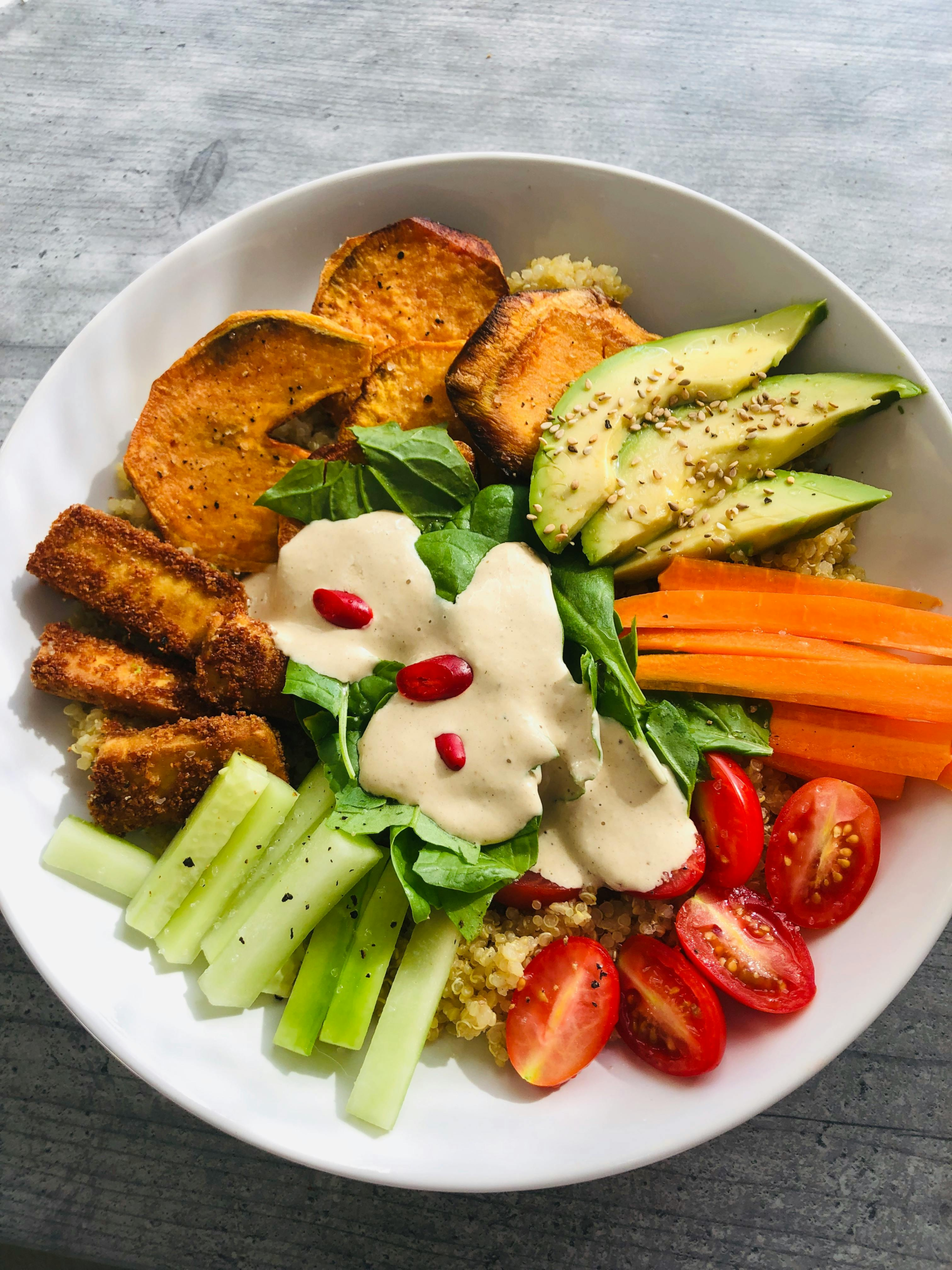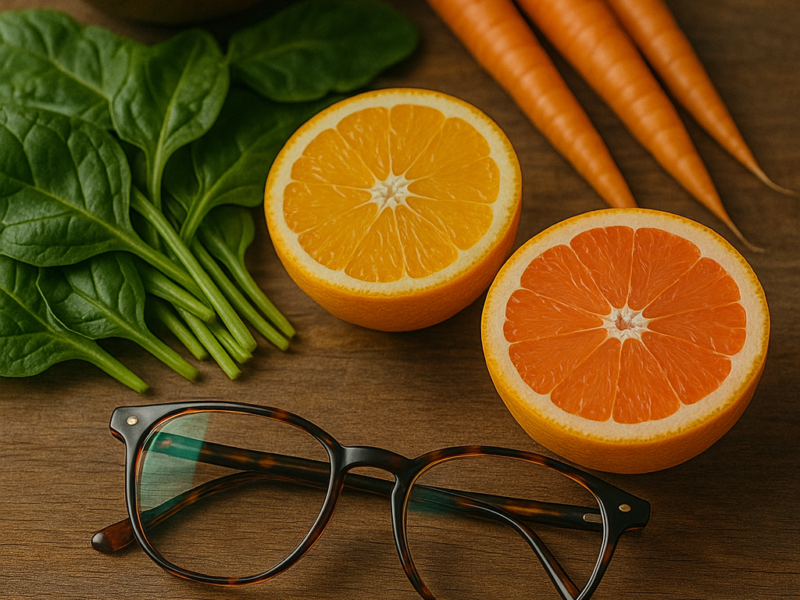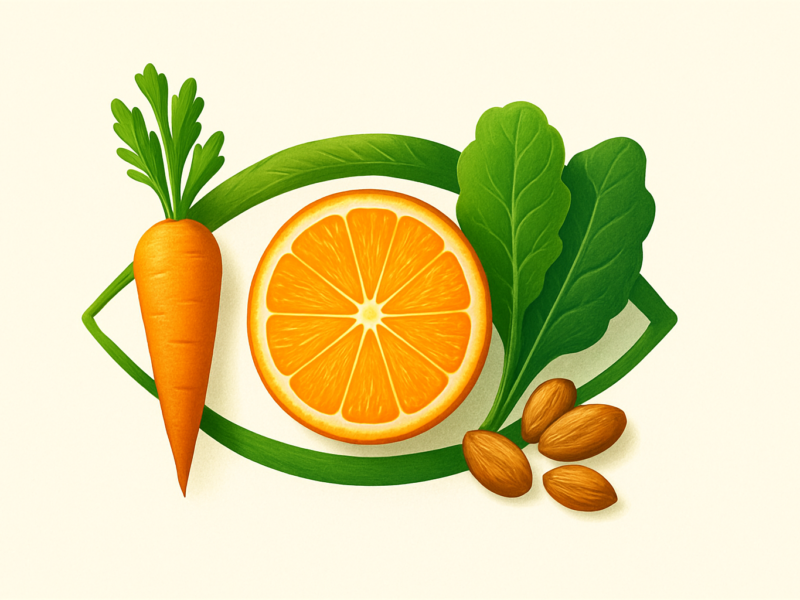👁️ Introduction: Why Nutrition Is the Foundation of Eye Health
As we age, our eyes go through natural changes — the lens stiffens, the retina thins, and oxidative stress increases. These biological shifts make us more vulnerable to age-related eye conditions like:
- Age-related Macular Degeneration (AMD)
- Cataracts
- Glaucoma
- Dry Eye Syndrome
The good news? Research shows that up to 70% of vision loss risk associated with aging can be reduced through a nutrient-rich diet.
In this article, you’ll learn which foods (and nutrients) protect your eyes, how they work, and how to build a daily nutrition plan to preserve clear vision well into old age.
🧬 1. Understanding How Nutrition Protects Your Eyes
Your eyes are highly metabolic organs, meaning they need constant nutrients to function and defend against damage.
Three main mechanisms protect your vision:
- Antioxidants neutralize harmful free radicals that cause retinal damage.
- Omega-3 fatty acids maintain healthy tear production and prevent inflammation.
- Carotenoids (like lutein and zeaxanthin) act as natural blue-light filters for the macula.
When your diet lacks these compounds, your risk of AMD, cataracts, and other degenerative conditions increases dramatically.
🥬 Did You Know?
<div style=”background-color:#f2f8fc; border-left:5px solid #0073e6; padding:15px; margin:20px 0;”> 💡 <strong>Did You Know?</strong> The retina consumes more oxygen per gram than any other tissue in your body — meaning it’s extremely vulnerable to oxidative damage without enough antioxidants in your diet. </div>
🥕 2. Key Nutrients That Protect Against Eye Aging
1. Lutein & Zeaxanthin
These two carotenoids form the macular pigment, which filters harmful blue light and supports central vision.
Best food sources:
- Spinach
- Kale
- Broccoli
- Corn
- Egg yolks
💡 Research Insight:
A 2024 Harvard study found that people who ate leafy greens 3–5 times per week had a 43% lower risk of AMD progression.
2. Vitamin C
A powerful antioxidant that supports blood vessels in the eyes and slows cataract formation.
Top sources:
- Oranges
- Kiwi
- Strawberries
- Red bell peppers
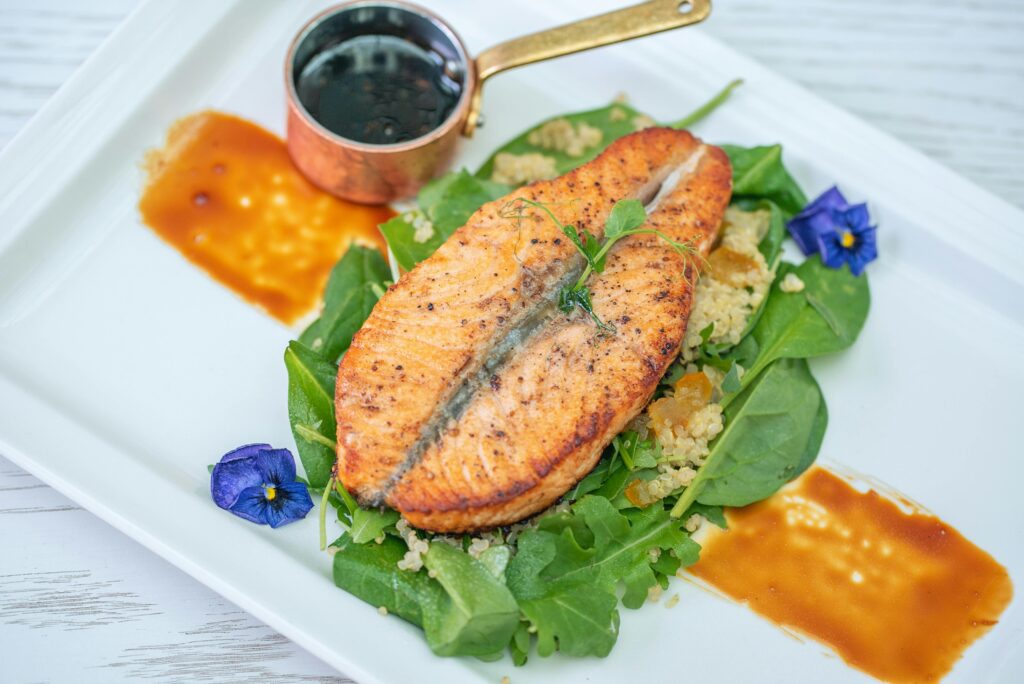
3. Vitamin E
Protects retinal cells from free-radical damage and supports the lipid layer of the tear film.
Top sources:
- Almonds
- Sunflower seeds
- Avocados
- Olive oil
4. Zinc
Zinc helps transport Vitamin A from the liver to the retina, where it forms melanin, a protective pigment.
Top sources:
- Oysters
- Pumpkin seeds
- Beef
- Lentils
5. Omega-3 Fatty Acids
Critical for maintaining the oily layer of tears, preventing dry eyes and inflammation.
Top sources:
- Salmon
- Sardines
- Flaxseeds
- Walnuts
6. Vitamin A (Beta-Carotene)
Essential for low-light and color vision. Deficiency can cause night blindness.
Top sources:
- Carrots
- Sweet potatoes
- Butternut squash
7. Selenium & Copper
Both minerals enhance the activity of antioxidant enzymes like glutathione peroxidase, which protects the retina from oxidative damage.
Top sources:
- Brazil nuts
- Mushrooms
- Whole grains
🧠 3. Building an Eye-Healthy Daily Meal Plan
Here’s how you can structure a nutrition routine that supports lifelong eye protection.
Breakfast
- Scrambled eggs with spinach and tomatoes
- Whole-grain toast with avocado
- Green tea or fresh orange juice
Lunch
- Grilled salmon with quinoa and steamed broccoli
- Carrot and kale salad with olive oil dressing
Snack
- Almonds and blueberries
- One kiwi or orange
Dinner
- Lentil soup with sweet potatoes
- Brown rice and sautéed kale
- Herbal tea or chamomile
Bonus:
Once or twice a week, include sardines or mackerel — they provide DHA and EPA, the two omega-3s most beneficial for your retina.
⚙️ 4. The Science Behind the “Eye-Protection Diet”
The AREDS2 (Age-Related Eye Disease Study) by the U.S. National Eye Institute found that specific nutrients significantly reduced AMD progression.
Their formula included:
- 500 mg Vitamin C
- 400 IU Vitamin E
- 10 mg Lutein
- 2 mg Zeaxanthin
- 80 mg Zinc oxide
- 2 mg Copper oxide
💡 People who followed this nutrient combination saw a 25% slower rate of AMD progression.
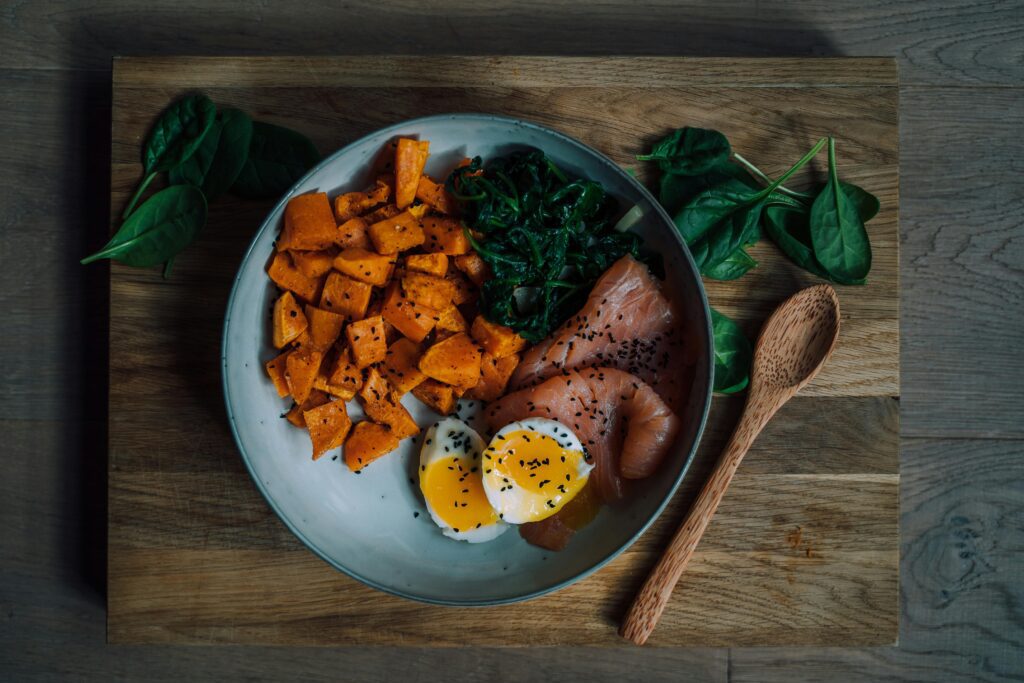
🧘 Lifestyle Tips to Enhance the Benefits of Nutrition
- Quit smoking — tobacco accelerates macular degeneration.
- Maintain a healthy weight — obesity increases oxidative stress.
- Wear sunglasses outdoors — UV exposure worsens cataracts.
- Exercise regularly — improves blood flow to the retina.
- Get enough sleep — regenerates tear production and retinal repair.
💬 FAQ – Frequently Asked Questions
Q1: Can diet really prevent age-related eye diseases?
Yes. While it can’t reverse genetic risk, a nutrient-rich diet dramatically reduces disease progression.
Q2: How soon can I notice improvements from better nutrition?
Within 3–6 months, most people report less dryness, sharper vision, and reduced glare sensitivity.
Q3: Are supplements as effective as real food?
Food sources are ideal, but AREDS2-approved supplements help fill nutritional gaps.
Q4: Is coffee bad for eye health?
Moderate coffee (1–2 cups/day) isn’t harmful, but hydration is key — pair it with water.
Q5: Can vegan diets support eye health?
Yes, if balanced with plant-based omega-3s (chia, flaxseed) and fortified B12.
✅ Conclusion
Nutrition is the first and most powerful defense against age-related eye diseases.
By adding just a few eye-protective foods — leafy greens, fatty fish, colorful fruits, and nuts — you nourish your retina, support your tear film, and strengthen your vision naturally.
Healthy eyes start on your plate.
Eat smart today to see clearly tomorrow.
